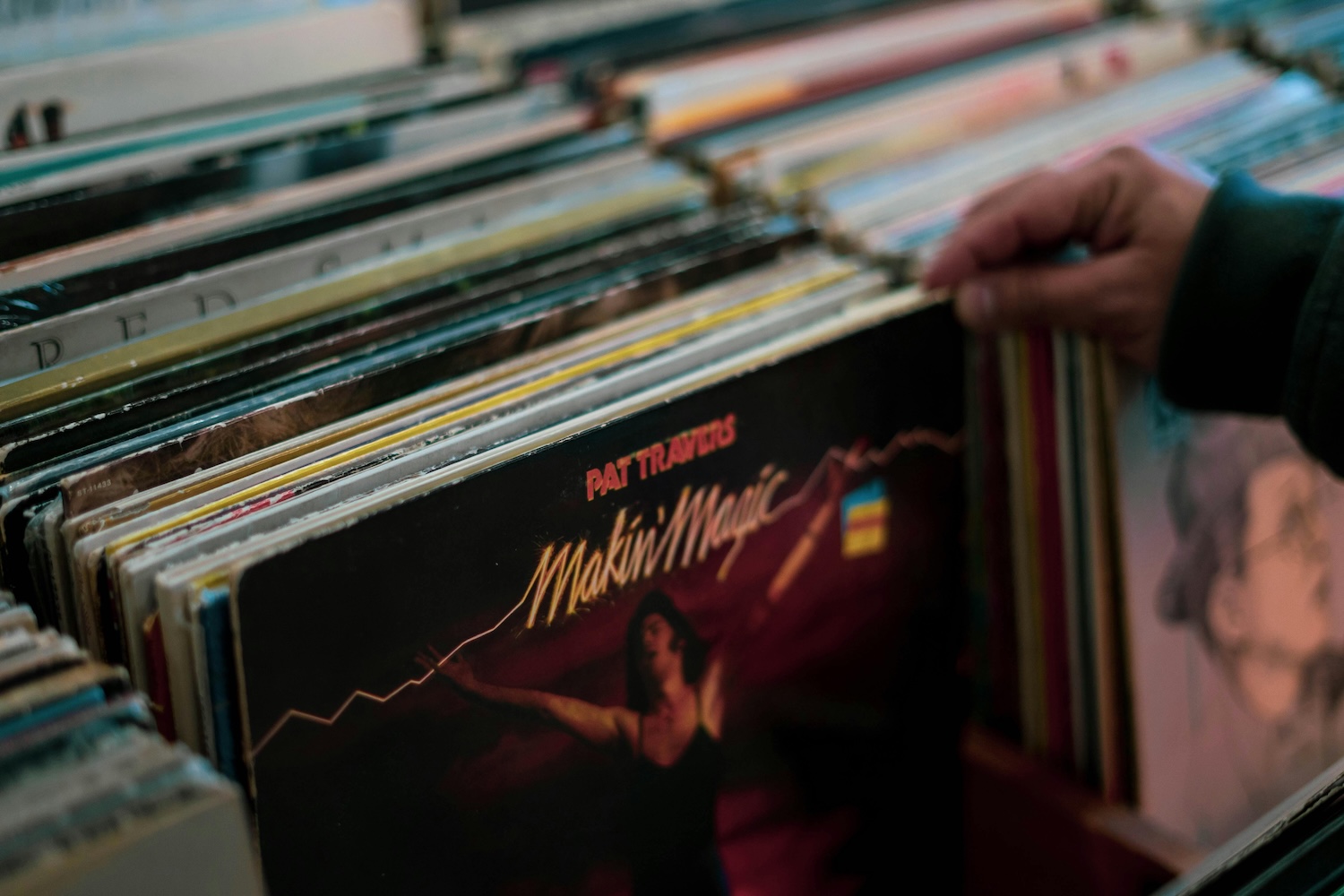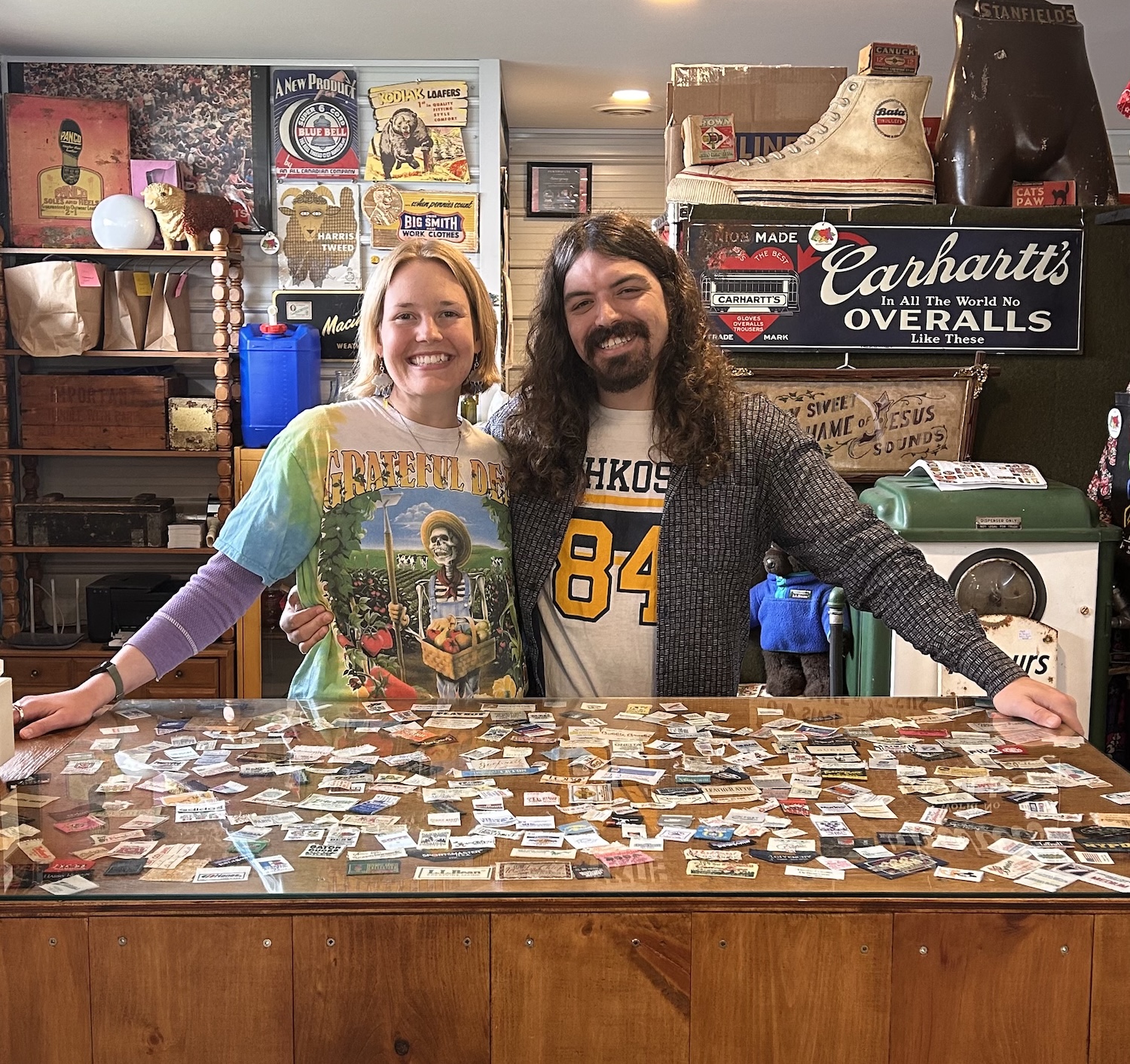
The making of a “mob wife”: Why vintage furs should be your go-to instead of new faux
The “mob wife” look might be a momentary trend, but it has its roots in the vintage world with the iconic fur coat. Laura MacNutt, owner of KingsPIER Vintage, talks to us about why you should confidently wear vintage fur
Fur is back in a big way this winter now that the “mob wife aesthetic” is trending online — bold makeup, big hair, gold jewellery and lots of leopard print.
With fur coats being the pièce de résistance of a “mob wife” outfit, vintage collectors are likely just reaching into their closets for their nearest fluffy fur.
But if you’re only just ready to find your inner Carmela Soprano for the first time, you might find yourself searching for a new-to-you fuzzy topper — and wondering about whether or not it’s “acceptable” to wear vintage fur.
If you were around in the ’90s, you may remember the “I’d Rather Go Naked Than Wear Fur” campaign from the People for the Ethical Treatment of Animals (PETA), as well as a few instances where PETA activists dumped red paint onto passersby who were wearing fur coats.
The campaign was so successful that fur trade activities declined in many parts of the world — the number of mink farms fell by over 70 per cent in the U.S. over a period of about 20 years, according to Scientific American — and wearing real fur became so stigmatized that most top fashion design houses renounced it in favour of faux.
But what about fur coats that are already in circulation? Are vintage fur coats “ethical”? Is faux fur more sustainable than the real thing? Should you still be buying faux fur in 2024 with all of our current sustainability concerns, or should you consider opting for vintage fur?
We called on Laura MacNutt, founder of KingsPIER Vintage and Halifax Vintage Garment Market in Halifax, N.S. to get the scoop on all things vintage fur.
Laura’s been buying and selling vintage furs for KingsPIER since 2013, and, in addition to a wide variety of other vintage clothing and accessories, carries everything from camel-hair trimmed coats and full-length blue fox pelts to shearling-lined bomber jackets and Old Hollywood–style mink stoles.
The problem with faux fur, Laura says, is that it’s akin to greenwashing and deceptively convinces the public that it’s the environmentally friendly choice over vintage.
Turning over 30-year stigmas about wearing vintage fur isn’t an easy task, though.
In her roles as a production designer and garment supplier for film and television productions, Laura sits on the sustainability committee for the Directors Guild of Canada and is actively challenging current policies that prohibit the use of real fur and other genuine artifacts in favour of using authentic vintage pieces.
Here’s why she says vintage is the way to wear fur:
One of the top Google searches on this topic is: “Is vintage fur ethical?” What do you have to say to that?
Laura MacNutt: Vintage fur already exists, and if there’s quality remaining in the garment, then absolutely it would be wasteful to not use it. Synthetic or faux furs are created with non-sustainable petroleum products — chemicals. [Ed. note: For more about how petroleum is harvested, check out our article on vintage polyester].
Not only are faux furs synthetic and toxic to make, but they’re synthetic and toxic to care for and wear. You’re wearing it and these little filaments are flying around and breaking down and you’re inhaling it.
Or whenever faux furs are laundered through laundromat processes, synthetic debris results. There are some more sustainable laundromat concepts that claim to be less toxic, but you’re still breaking down these synthetic polymers, breaking down the fibres and contributing to the microplastic wasteland. There’s no two ways about it.
If you’re making it out of petroleum; it’s not sustainable. It’ll last forever but it won’t look very good, and it will never keep you warm because it never did. It’s not hollow fibres of fur; they're solid fibres of plastic.

In the ’90s, faux fur took over. Where do you think we’re at right now with the perception of vintage fur?
LMN: The marketing strategies of these corporations that were generating, creating and selling faux furs were so effective and so deceitful that we’re still trying to recalibrate. I say deceitful because the whole intent of synthetic or faux fur was to create a pretend product. A product that replicated, strictly aesthetically, the qualities of fur.
[Faux] is superficial, whereas obviously vintage furs had a real purpose — not just because they were the only option, but because they were so effective at keeping people warm. And they were the byproduct initially of our nutritional source.
Shearling is fur. Sheepskin and any leather, one could argue, have been an easier acceptance because we understand that beef and lamb are such legitimate, consumed commodities, whereas you’d be hard-pressed to find someone who eats mink.
But the fur trade is alive and well in many cultural areas of our country. And sealskin is an extremely viable byproduct of the seal trade. If the seal is not harvested, the cod fish gets wiped out by the abundance of seals. That’s a whole other ethical conversation that I am certainly not equipped to defend, but I do respect Indigenous cultures that depend upon seal meat and seal fur — it’s essential that they’re harvested, and the furs are absolutely unequivocally utilized to the greatest extent.
As far as vintage furs, the stigma is balancing out. I think that people are appreciating and understanding the value of vintage furs. It’s been a very slow, methodical pursuit.
Find vintage and secondhand coats at a market near you
View our event calendar
From a utility perspective, what’s the major difference between faux fur and vintage fur coats?
LMN: The faux, down-filled jackets — the so-called puffers. They look like they should be warm, but they’re deceptively ineffective at accomplishing their purpose.
The irony of our fashion industry is that it takes the visual value of things and capitalizes and exploits them without considering what the actual consequences are, not just in terms of not recognizing their disposable lifecycle, but in the purpose of the garments.
Faux fur is not keeping us warm or protecting us from the elements. It’s just looking like it does. It’s like a movie set of a house that appears to have practical lights and practical plumbing but in actual fact is all just trompe l'oeil and really effective design work for the camera.
The integrity of a garment is so critical to me. If I’m talking about utilitarian garments, I drill down to: Is that fur coat actually going to live another few years and keep the individual warm and look good? The aesthetics are important, but they’re not primary for winter garments.
It’s kind of absurd to spend a significant amount of money on a coat that isn’t going to keep you warm. We have such a dicey climate anyway. All of our resources are so scarce that we have to be extremely conscientious about what we buy, why we buy it, and what we do with it.

Faux also encourages people to buy multiples — you need the pink one, the grey one, the one that looks like real fur. How do the costs compare?
LMN: It’s not inexpensive either way. A vintage fur is an investment no matter how you cut it. They’re valuable, and I guess that’s part of my math. Clothes are valuable. There’s the fact we buy clothes by the pound or find that $5 shirt, new with tags — but someone made them.
We’ve got to get back to appreciating the value of clothing rather than celebrating cheap clothing.
Clothing is so important for us. It’s so valuable. It’s like a house for our body. So why have we diminished the value of it?
The only kind of constant among all of us human beings is that we all need clothing. Even in the tropics, you need something. So celebrate it. Value it. Understand why those natural fibres and the well-crafted garment is so much more expensive than the $5 disposable T-shirt.
What types of vintage furs should shoppers consider?
LMN: Vintage shorn beaver is my absolute favourite go-to for fur. It’s extraordinary. It’s durable. It’s magical. It feels synthetic, it’s so soft and velvety. Very seldom have I seen it break down, so it has a real sustenance.
Shearling I absolutely love, because it’s a relatively easy fur and skin. It’s so warm and can be all kinds of different degrees of density and lightness and can be shorn, or frilly like the Mongolian.
In terms of exquisite, elegant beauty: silver fox or grey fox. You can’t replicate that in synthetics and neither would you want to, but there’s something so particularly stunning about them and they’re gorgeous. They’re light and the coats just dance with the wearer.

What are some of the things people should look for when purchasing vintage fur?
LMN: They are organic, so there’s certainly a number of things that you should consider. The type of fur. Rabbit fur is the bottom of the barrel in terms of value, not simply because it’s a common fur, but for the hollowness of it. It just doesn’t have the same qualities as the more sought-after fur, and it doesn’t retain its lustre.
If the ruff of a parka is made out of coyote or wolf or different higher-quality furs, condensation [in the air] doesn’t stick to it. Whereas with rabbit fur, condensation from your breath sticks to the ruff. When it’s wet it doesn't keep you warm.
Make sure that the hair is still intact, and that the leather is supple. You want to make sure the actual fur filaments are not coming out in clumps. It’s inevitable that it’s going to start to break down.
If the leather starts to dry out, the follicles will open up and there’s really absolutely nothing you can do once the hair starts to fall out. Once it starts to crack, it’s beyond repair.
So keep the fur cool and don’t subject it to radical temperature changes. You can use an emollient between the lining and the leather.
Get your nose in there and smell it. If it smells bad, you’ll know. If it smells smoky, I’ll put the furs into a bag with some coffee grounds and then air them outside.

How does one know if their vintage fur is valuable?
LMN: I get five calls a day with people unloading their grandmother’s closets. Everyone’s trying to sell me furs. And inevitably, they’ve been dried out. There’s not enough warehouse space to take care of them and restore them properly and turn them around because there’s still not that demand, which is really sad.
With respect to how to approach or value them, it’s all over the map because a fur that hasn’t been taken care of is worth literally nothing. Once it starts to deteriorate, there’s nothing you can do with it, except reclaim any portion thereof and make a nostalgic stuffie or a hat or earmuffs, and I certainly do that. I’ll strip it right down. I reclaim every reclaimable element of a vintage fur.
Laura MacNutt’s new venture, Halifax Vintage Garment Market, opened Jan. 21 and features reclaimed works, bespoke clothing, upcycled collections, workshops and artists-in-residence.
This interview has been condensed for clarity.
Thank you for valuing our work!
Support our work to see this page.
You’ve got a good eye, but this gem is only available for members. Register for a plan or upgrade your current one to peek behind this vintage curtain, or log in below.















